The Farne Islands are a group of islands situated off the coast of Northumberland, England. The islands are home to an impressive array of bird species, making them a popular destination for bird enthusiasts and nature lovers.
The islands provide a safe breeding ground for several species of birds, including puffins, guillemots, razorbills, and terns.
The birds on the Farne Islands are a significant attraction for visitors, as they offer a unique opportunity to observe these sea birds up close in their natural habitat.
In this article, we will take a closer look at the bird species found on the Farne Islands and why they are worth visiting.
9 Birds in Farne Island
The Farne Islands, located off the coast of Northumberland in England, are known for their rich birdlife. While the specific species present may vary depending on the time of year, the following are nine common bird species that can often be found on or around the Farne Islands:
1. Sandwich Tern
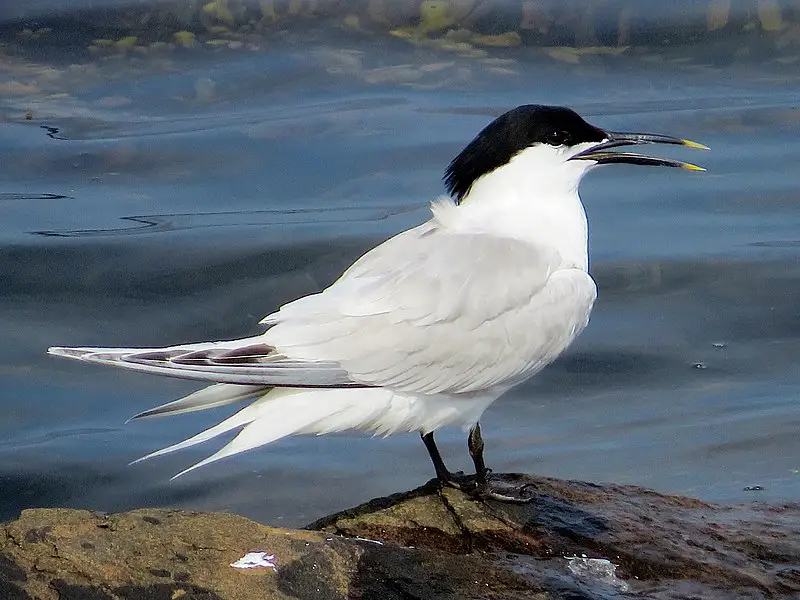
The Sandwich Tern is a medium-sized tern species belonging to the family Laridae. It has close relationships with four other crested terns, and is known to interbreed with the lesser crested.
These birds are distributed throughout Europe and as far east as the Caspian Sea in summer, while they migrate south during the winter season up to South Africa and India.
They have long wings which help them fly over vast distances effortlessly.
The plumage of these birds consists mainly of greyish tones on their bodies combined with white head and neck areas, whereas they also sport an orange beak along with black markings near their eyes, giving them a distinct look from other related species.
Scientific classification:
| Kingdom | Animalia |
| Phylum | Chordata |
| Class | Aves |
| Order | Charadriiformes |
| Family | Laridae |
| Genus | Thalasseus |
| Species | T. sandvicensis |
Also Featured In: Birds of Netherlands, Birds of Farne Islands
2. European Shag
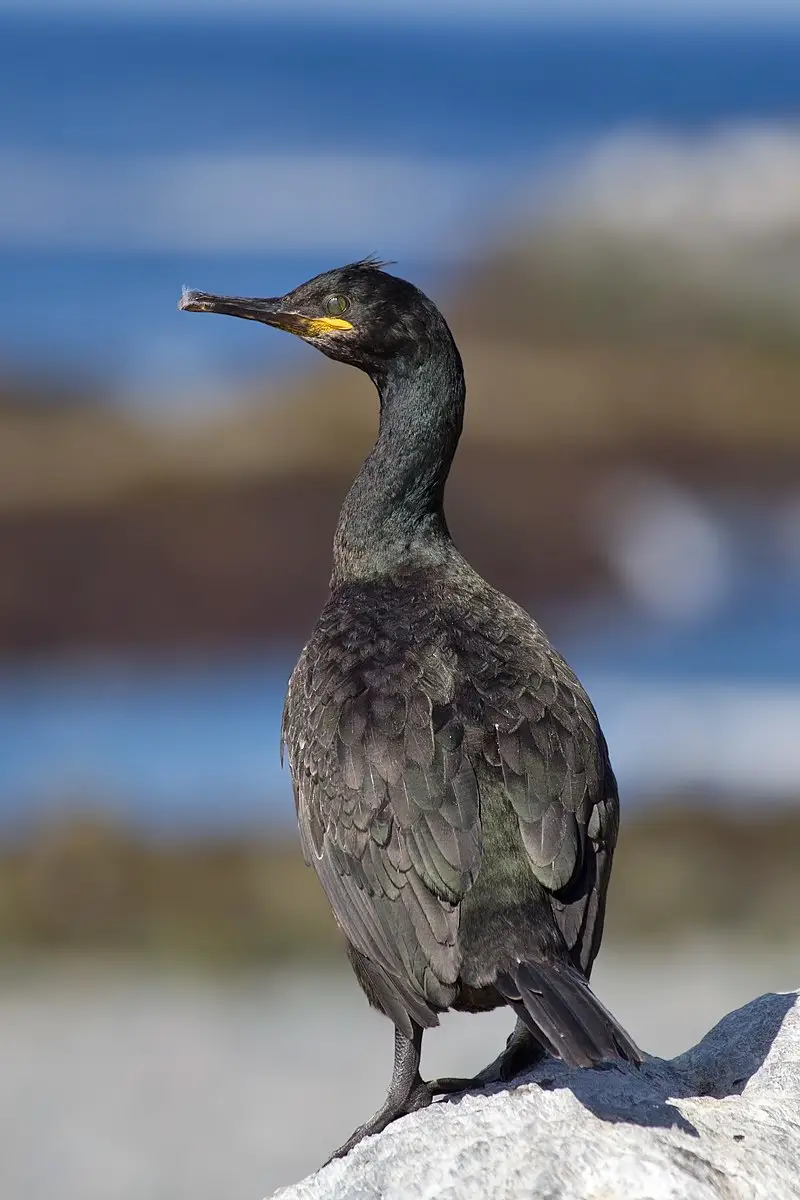
The European shag, or common shag, is a species of cormorant found in western and southern Europe, southwest Asia and North Africa. It usually winters in its breeding range except for the northernmost birds.
The bird has an unmistakable look with greenish-blue feathers on top of its head, white underparts, and some black stripes.
Its long neck helps distinguish it from other cormorants as well as provide great sight while searching for food beneath the sea surface.
This seabird mainly feeds off fish but also eats crustaceans occasionally when available near their nesting grounds, which are usually located around rocky coastlines close to open water bodies like seas and oceans.
Scientific classification:
| Kingdom | Animalia |
| Phylum | Chordata |
| Class | Aves |
| Order | Suliformes |
| Family | Phalacrocoracidae |
| Genus | Gulosus Montagu, 1813 |
| Species | G. aristotelis |
Also Featured In: Birds found in portugal, Shetland Islands Birds You Should Know
3. Lesser Black-Backed Gull
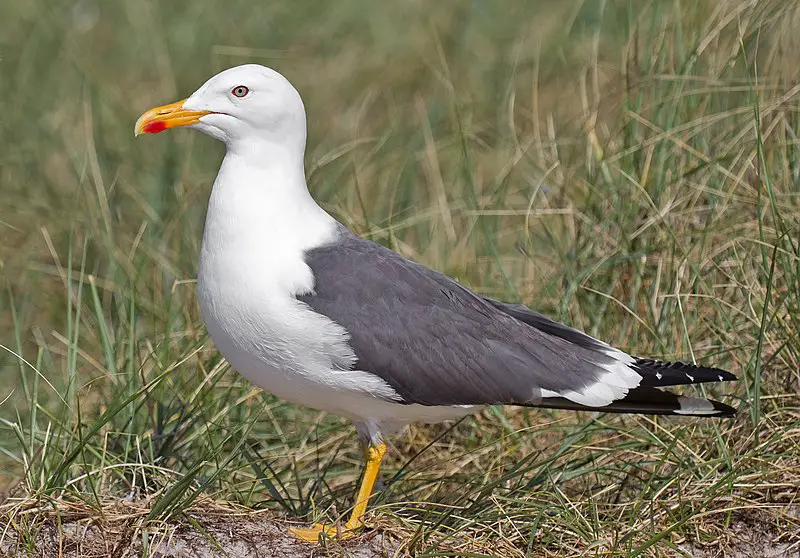
The lesser black-backed gull is a large, migratory bird found along the Atlantic coasts of Europe and North America.
During winter months, they are commonly spotted along the British Isles to West Africa, while in summer, many birds can be seen year-round on both east and west coastlines.
In recent years, the numbers of these birds have risen dramatically, with some winters having great abundance present throughout their range.
They measure around 48cm long, with wingspans reaching 110 cm across when fully grown – making them larger than most other gull species.
These hardy seabirds feed mainly on small fish, crustaceans, molluscs, and carrion or scraps from human activities near coastal areas such as fishing ports or refuse dumpsites.
Scientific classification:
| Kingdom | Animalia |
| Phylum | Chordata |
| Class | Aves |
| Order | Charadriiformes |
| Family | Laridae |
| Genus | Larus |
| Species | L. fuscus |
Also Featured In: Most Common Scotland Birds, Amsterdam Birds You Should Know
4. Roseate Tern
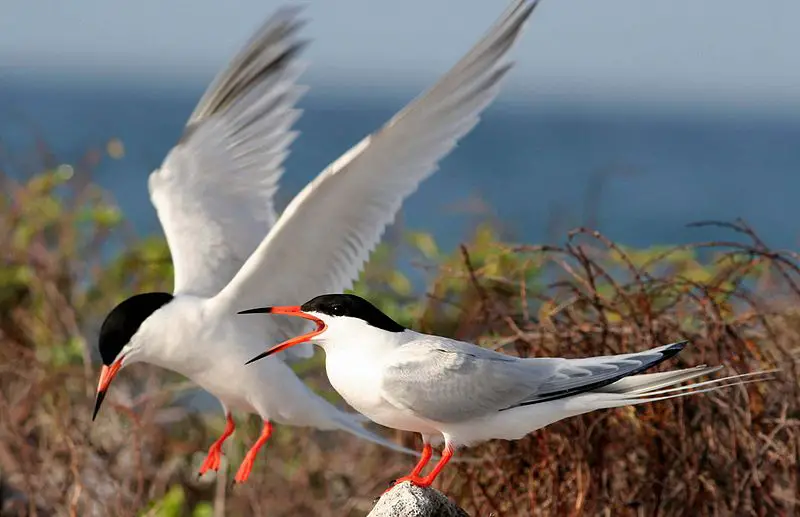
The Roseate Tern (Sterna dougallii) is a species of bird that belongs to the family Laridae. It gets its name from its pink breast in breeding plumage, which gives it a “roseate” appearance.
The genus Sterna comes from Old English and means “tern”, while the specific dougallii refers to Scottish physician and collector Dr Peter McDougall (1777–1814).
This species was first described by George Montagu in 1813.
They are most common near coasts but can be found further inland occasionally, too. These birds mainly feed on small fish like sardines, anchovies or herring, and crustaceans when available.
They typically lay two eggs yearly during their breeding season between May and September before migrating south for winter.
Scientific classification:
| Kingdom | Animalia |
| Phylum | Chordata |
| Class | Aves |
| Order | Charadriiformes |
| Family | Laridae |
| Genus | Sterna |
| Species | S. dougallii |
Also Featured In: Ireland Birds, Birds that Live in the Ocean
5. Razorbill
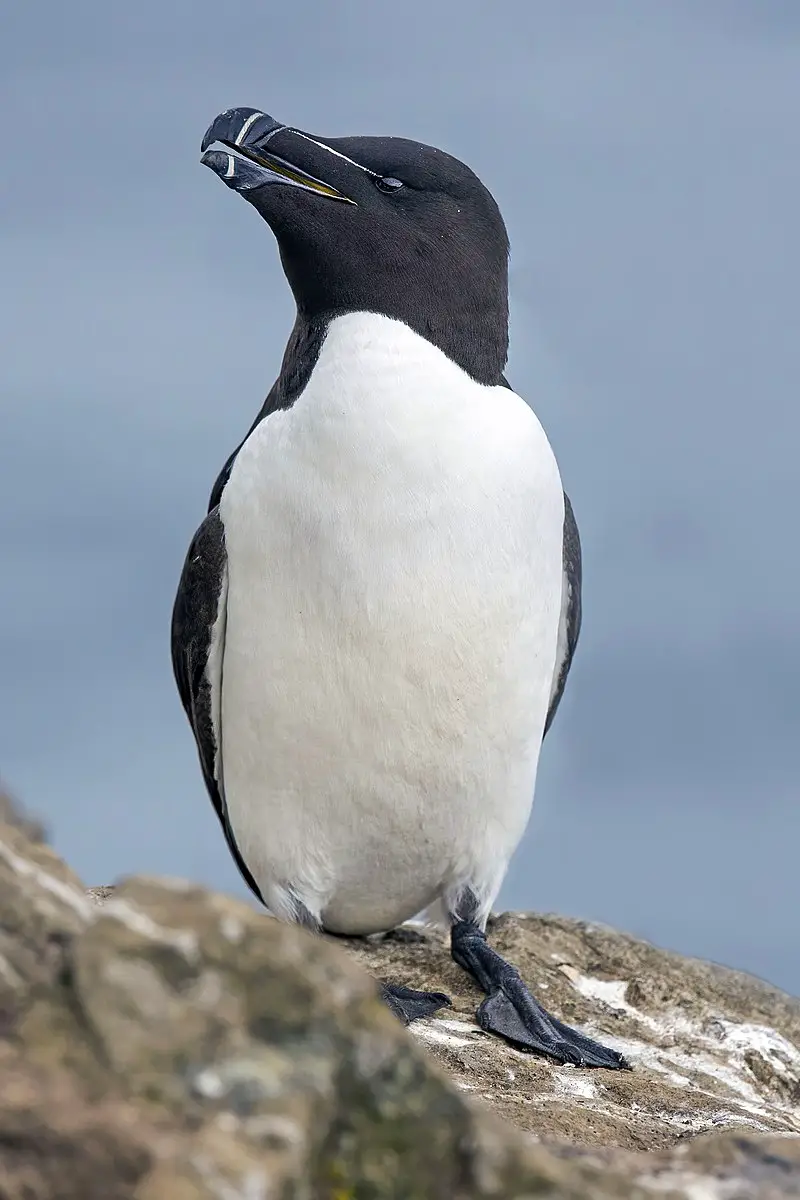
The Razorbill is a seabird of the family Alcidae and is closely related to the extinct great auk. It lives in subarctic waters of the Atlantic Ocean, primarily black with white underside, and both male and female look identical.
They have long, pointed wings, which help them dive underwater for their food, mainly fish and crustaceans.
Usually they form large colonies on cliffs or rocky islands but can also be found solitary during breeding season when pairs nest together in crevices or rock ledges near sea level.
During winter, they migrate southwards into open water areas, where they stay until spring arrives again before returning to breed again.
The razorbill’s population has been declining due to human activity, such as overfishing, so conservation efforts are being made by governments across Europe in order to protect this species from extinction.
Scientific classification:
| Kingdom | Animalia |
| Phylum | Chordata |
| Class | Aves |
| Order | Charadriiformes |
| Family | Alcidae |
| Genus | Alca |
| Species | A. torda |
Also Featured In: Iceland birds, Birds You’ll Find in the Sea
6. Puffins
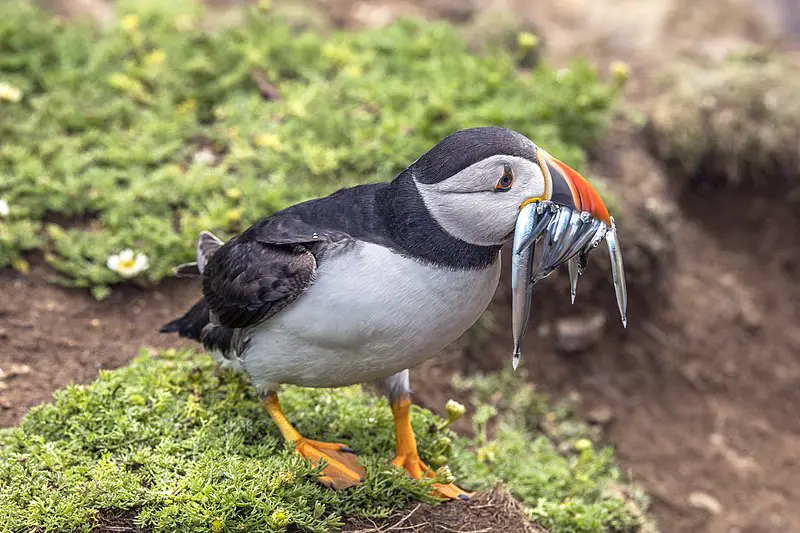
Puffins are small seabirds that belong to the bird genus Fratercula. They primarily feed by diving into the water and breed in colonies on coastal cliffs or offshore islands.
They can nest in crevices among rocks or in burrows in the soil. There are three species of puffins, with two found in the North Pacific Ocean and one in the Atlantic Ocean.
The tufted puffin and horned puffin are North Pacific species, while the Atlantic puffin is the only puffin species found in the Atlantic Ocean.
These birds have colourful beaks that are often compared to clowns’ faces, making them a popular sight among birdwatchers.
Puffins are fascinating creatures that have long been the subject of fascination and study among the scientific community.
Scientific classification:
| Kingdom | Animalia |
| Phylum | Chordata |
| Class | Aves |
| Order | Charadriiformes |
| Family | Alcidae |
| Tribe | Fraterculini |
| Genus | Fratercula Brisson, 1760 |
Also Featured In: Famous Paintings Birds, Most Common Nature Birds
7. Fulmars
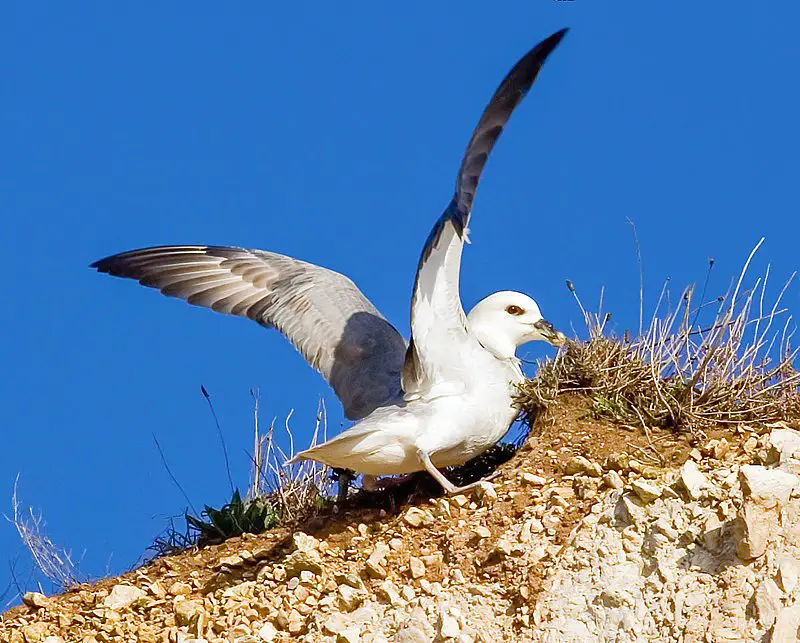
Fulmars are seabirds that belong to the Procellariidae family. They have two current species and two previous fossil species. They look like seagulls, but their flight and tube noses make them distinctive.
Fulmars lay one or two eggs on a ledge of bare rock or on a grassy cliff during the breeding season.
| Kingdom | Animalia |
| Phylum | Chordata |
| Class | Aves |
| Order | Procellariiformes |
| Family | Procellariidae |
| Genus | Fulmarus Stephens, 1826 |
Also Featured In: Birds of Orkney,
8. Kittiwakes
Kittiwakes are part of the gull family, and there are two species, black-legged and red-legged. They are distinguishable in North America, but in Europe, only the black-legged species is found.
They predominantly live near the coast and feed on small fish and other marine creatures. These birds are well adapted to life at sea and can glide over vast distances with minimal flapping of their wings.
Breeding colonies are found in rocky areas, where they build nests made of grass and feathers.
Unfortunately, kittiwake populations have been declining due to factors such as climate change, overfishing, and pollution.
Conservation efforts are being made to protect these birds and their habitats.
Scientific classification:
| Kingdom | Animalia |
| Phylum | Chordata |
| Class | Aves |
| Order | Charadriiformes |
| Family | Laridae |
| Subfamily | Larinae |
| Genus | Rissa Stephens, 1826 |
9. European Rock Pipit
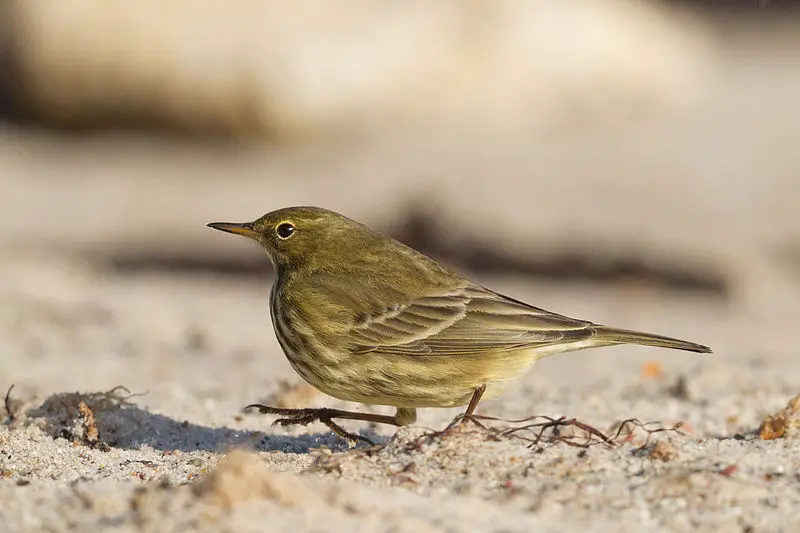
The European Rock Pipit, also known as Anthus Petrosus, is a small passerine bird that inhabits rocky coasts in Western Europe.
This bird has streaked greyish-brown upperparts and buff underparts and looks similar to other European pipits.
This bird has three subspecies, among which only the Fennoscandian form migrates and spends winters in shoreline habitats in Europe.
The European Rock Pipit is a pretty common sight for birdwatchers and is often found near the seashore, where it scavenges for food.
These birds are versatile and adaptable to their surroundings, enabling them to thrive in the rocky coastal habitats.
They have a unique call and behavior, which makes them a familiar sight for local communities living near coastal areas.
Overall, the European Rock Pipit is a fascinating bird species that is widely appreciated for its unique characteristics and adaptability to different environments.
Scientific classification:
| Kingdom | Animalia |
| Phylum | Chordata |
| Class | Aves |
| Order | Passeriformes |
| Family | Motacillidae |
| Genus | Anthus |
| Species | A. petrosus |
Also Featured In: Birds That Live in Anglesey,
Conclusion
The Farne Islands in Northumberland, England, provide a captivating sanctuary for various bird species.
While these islands are home to numerous avian residents, the nine birds mentioned, including the iconic Atlantic Puffins, graceful Guillemots, and elegant Arctic Terns, represent just a fraction of the diverse birdlife that thrives in this unique coastal habitat.
The Farne Islands serve as crucial breeding and nesting grounds, drawing birdwatchers and wildlife enthusiasts from far and wide.
Their significance in supporting such a range of seabirds underscores the importance of conservation efforts to ensure these feathered inhabitants’ continued survival and well-being, making the Farne Islands a cherished destination for those seeking a close encounter with nature.